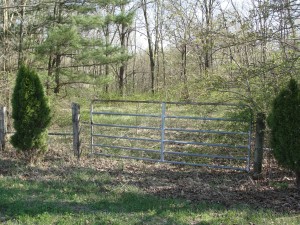From the list of Consulting Foresters provided by the State, I picked the closest one to the Timber Pasture.
His credentials looked good and he was in the business of providing Forest Management Plans.
I called him.

He had a very reassuring, relaxed manner over the phone, and I liked that. Yes, he was available for making up the plan. He’d like to meet me at the Timber Pasture (now forest), go over a few things with me, and then he’d walk the property and assess the trees, soil, terrain, and invasive species. All of those words were starting to sound familiar to me, based on my recent discussion with the County Tax Assessor. We agreed to meet.
March 31st was unusually warm for the season, with a bright, clear sky and almost no wind. I arrived at the Timber pasture at 9 am, and the Forester was already there in his pickup truck.
One glance and I had no trouble believing he was a Professional Forester. Bright, enthusiastic eyes, a dimpled smile partially hidden by a bushy, but not unruly full beard. His brown Carhartt coveralls were double layered to protect against thorns (no so my LL Bean Relaxed Fit Denims). His boots were completely waterproof and steel-toed. My New Balance 990’s were not. He certainly looked the way I was hoping he’d look…competent. I suspect his assessment of me was…not competent (as a forester, anyway.)
He climbed out of his truck and greeted me, laying his clipboard on hood of the Ford F-250.
“This used to be a pasture,” He observed.
“That’s right, but not for the last 70 years.”
“Whenever pasture land is left alone for a long time, a process called ‘succession’ begins, with grass giving way to bushy plants and then trees growing. It follows a certain pattern and I can recognize it here.”
He said. “I haven’t walked the property yet, but I can see a nice hardwood forest trying to grow up, with Walnut, Hickory, some White Oak, and some others.” he offered enthusiastically. “You have a few evergreens that I can see, and I don’t have a good explanation for those, except that maybe someone planted them. They don’t normally like to grow here.”
We discussed some of the technical aspects of developing the Forestry Management Plan. He was very familiar with the Property Tax issues. He explained that the important part of the Forest Management Plan was the Management part. I had to be actively involved in managing the Forest. If I were to sit at home and never visit the property, then that would not be OK. Reassuringly, he added that I didn’t need to solve all the forest problems at once. I could work on it gradually over 10 years, and as long as I had evidence that I was making an honest effort to follow the plan, that would be acceptable.
I explained my limitations.
- I lived 4 hours away.
- I’m not a lumberjack and had no plans to become one.
- I have no forestry or gardening background and really don’t know what I’m doing in the woods.
- I’m not 25 years old any more.
“Can you spray some Roundup on weeds if I show you what they look like?” he asked.
“Sure, I can do that.”
“Can you run a weed trimmer?” he inquired.
“I’m not too sure what that is. Is it the spinning string on the end of a pole?
“Yep, that’s it.” He replied.
“OK, I can do that, too.”
“Can you work a small chain saw?”
“Don’t know…I’ve never tried. I probably could learn. I’ve seen movies where people were using chain saws.” (I decided not to share the names of the movies with him.)
“Well then, that’s pretty much all you’d have to do. You can hire other people to do the heavy lifting, and gradually work on this over time.”
“Let’s go take a closer look at your woods.” he said.
